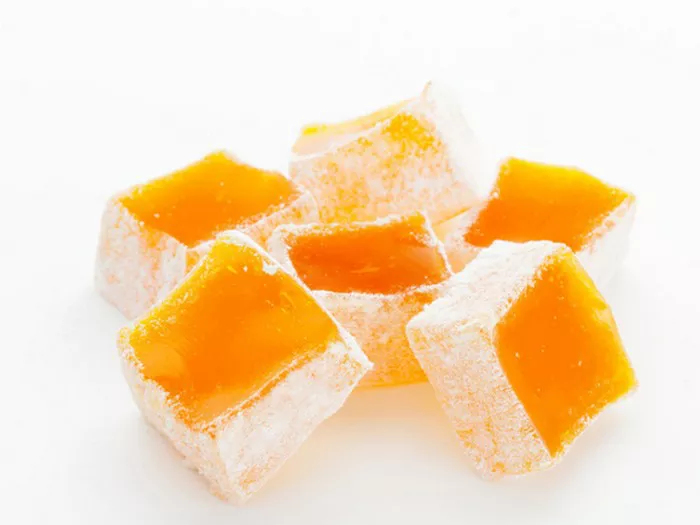Acne marks, or post-acne hyperpigmentation, are common skin concerns for those who have experienced breakouts. These marks can appear as dark spots or scars on the skin, which are often a reminder of the acne that once plagued the skin. For many individuals, finding an effective acne mark remover is a priority to restore their skin’s even tone and texture. Acne marks are different from acne scars; while scars involve deeper skin damage, marks are usually surface-level discoloration that can fade over time with the right treatment. This article will explore the best acne mark removers, the science behind how they work, and how to incorporate them into a skincare routine for the best results.
Acne marks are primarily caused by the skin’s inflammatory response to pimples. When the skin becomes inflamed, it can produce excess melanin in the affected areas, which results in dark spots. These marks can linger long after the acne has healed, leaving individuals with uneven skin tone. Fortunately, there are several treatments available that can help fade these marks over time. However, it is important to choose the right acne mark remover and understand how it works to ensure the best results without irritating the skin.
Understanding Acne Marks
Before diving into the best treatments, it’s important to understand the different types of acne marks and what causes them. Acne marks are typically categorized as either post-inflammatory hyperpigmentation (PIH) or post-inflammatory erythema (PIE). Both types occur after the healing of acne lesions but differ in their appearance and cause.
Post-Inflammatory Hyperpigmentation (PIH)
PIH refers to the dark spots or discoloration that appear on the skin after a pimple has healed. These marks are a result of excess melanin production during the healing process. People with darker skin tones are more prone to PIH, but it can occur in individuals with any skin type. These marks are often reddish-brown or purple in color, depending on the skin’s undertones. While PIH can be stubborn, it usually fades over time with the right treatment.
Post-Inflammatory Erythema (PIE)
PIE, on the other hand, refers to the red or pink marks that are left behind after acne. These marks occur due to the inflammation in the skin’s blood vessels and are common for individuals with fairer skin. PIE tends to resolve on its own over time, but it can take longer to heal compared to PIH. PIE marks are generally not as difficult to treat as PIH, but they still require some care to accelerate the healing process.
Key Ingredients in Acne Mark Removers
When choosing the best acne mark remover, it is essential to look for ingredients that specifically target hyperpigmentation and help even out the skin tone. These ingredients work by either inhibiting melanin production, promoting skin cell turnover, or reducing inflammation. Below are some of the most effective ingredients found in acne mark removers:
Vitamin C
Vitamin C is one of the most powerful antioxidants and is widely used for treating hyperpigmentation. It works by inhibiting the enzyme responsible for melanin production, thereby preventing dark spots from forming. Vitamin C also promotes collagen production, which helps improve skin texture and elasticity, making it an ideal ingredient for fading acne marks. It brightens the skin, giving it a more even tone. Look for stabilized forms of Vitamin C, such as ascorbic acid or sodium ascorbyl phosphate, for the best results.
Niacinamide
Niacinamide, or Vitamin B3, is another effective ingredient for fading acne marks. It works by inhibiting the transfer of melanin to skin cells, helping to lighten dark spots. Niacinamide also has anti-inflammatory properties, which can help reduce redness and swelling associated with acne. It is suitable for all skin types, including sensitive skin, and is often used in conjunction with other active ingredients to improve skin tone and texture.
Alpha Hydroxy Acids (AHAs)
AHAs, such as glycolic acid and lactic acid, are chemical exfoliants that help remove dead skin cells and promote skin turnover. This process helps to reveal fresh, new skin underneath and can accelerate the fading of acne marks. AHAs are particularly useful for those with PIH because they can exfoliate the top layers of the skin, gradually lightening dark spots over time. AHAs also improve skin texture by smoothing out rough or uneven areas.
Retinoids
Retinoids, including retinol and tretinoin, are powerful compounds derived from Vitamin A that promote cell turnover and stimulate collagen production. By increasing the rate at which skin cells regenerate, retinoids help to fade both acne scars and marks. Retinoids can also prevent new acne from forming by keeping pores clear. However, they can be irritating to sensitive skin, so it’s essential to introduce them gradually into your routine.
Hydroquinone
Hydroquinone is a skin-lightening agent that works by inhibiting melanin production. It is commonly used to treat hyperpigmentation, including dark spots caused by acne. While effective, hydroquinone should be used with caution, as it can cause irritation or sensitivity in some individuals. It’s best to use hydroquinone in lower concentrations and under the guidance of a dermatologist.
Licorice Extract
Licorice extract is a natural skin-brightening ingredient that helps to reduce hyperpigmentation. It works by inhibiting the production of melanin and has anti-inflammatory properties that can soothe the skin. Licorice extract is gentler than some other skin-lightening agents, making it a good option for those with sensitive skin.
The Best Acne Mark Removers
Now that we’ve discussed the key ingredients, let’s take a look at some of the best acne mark removers on the market. These products contain a combination of the ingredients mentioned above and are highly recommended for those looking to fade acne marks and even out their skin tone.
1. Ambi Skincare Fade Cream
Ambi Skincare Fade Cream is a well-known product for treating dark spots and hyperpigmentation. It contains hydroquinone, which works effectively to lighten dark acne marks. In addition to hydroquinone, the cream also contains vitamins C and E, which help to brighten the skin and improve its texture. It’s ideal for those with PIH and is suitable for all skin types. However, because of the hydroquinone content, it’s essential to follow the product’s usage instructions and apply sunscreen during the day.
2. Murad Rapid Age Spot and Pigment Lightening Serum
Murad’s Rapid Age Spot and Pigment Lightening Serum is a highly recommended product for treating acne marks and other types of hyperpigmentation. It contains a combination of hydroquinone and glycolic acid, which work together to exfoliate the skin and fade dark spots. The serum also includes Vitamin C, which helps brighten the skin and even out the tone. It’s a fast-acting formula that provides noticeable results within a few weeks of use.
3. The Ordinary Alpha Arbutin 2% + HA
The Ordinary Alpha Arbutin 2% + HA is an affordable option for fading dark spots and hyperpigmentation caused by acne. Alpha arbutin is a powerful skin-brightening agent that inhibits melanin production, while hyaluronic acid helps to keep the skin hydrated. This serum is gentle on the skin and suitable for all skin types. It can be used both morning and night and is an excellent addition to any skincare routine aimed at reducing acne marks.
4. Paula’s Choice Resist Triple-Action Dark Spot Eraser
Paula’s Choice Resist Triple-Action Dark Spot Eraser contains a combination of hydroquinone, glycolic acid, and niacinamide. This potent formula works to lighten dark spots and improve skin texture. It also helps to reduce the appearance of fine lines and wrinkles, making it a great option for those looking to target multiple skin concerns at once. This product is suitable for all skin types but should be used with sunscreen due to its exfoliating properties.
5. Kiehl’s Clearly Corrective Dark Spot Solution
Kiehl’s Clearly Corrective Dark Spot Solution is a gentle serum that targets both acne marks and other types of discoloration. It contains activated C, a stabilized form of Vitamin C, which helps to brighten the skin and reduce hyperpigmentation. The serum also includes white birch extract and peony extract, which work to soothe and improve the overall health of the skin. It’s suitable for sensitive skin and provides a natural, even skin tone over time.
How to Use Acne Mark Removers Effectively
To get the best results from acne mark removers, it’s essential to follow a consistent skincare routine and use the products as directed. Here’s how to incorporate acne mark removers into your routine:
1. Cleanse Your Skin Regularly
Start by cleansing your skin with a gentle, non-comedogenic cleanser that won’t strip your skin of its natural oils. Cleansing twice a day helps remove impurities, excess oil, and makeup, allowing the acne mark remover to work more effectively.
2. Apply the Acne Mark Remover
After cleansing, apply your acne mark remover. Depending on the product, you can apply it to your entire face or focus on specific areas with dark spots. Be sure to follow the instructions for the specific product, as some may need to be applied sparingly.
3. Moisturize
After applying your acne mark remover, follow up with a lightweight, hydrating moisturizer. Moisturizing helps to keep the skin barrier intact and prevent dryness or irritation caused by acne treatments.
4. Use Sunscreen
Because many acne mark removers can make the skin more sensitive to the sun, it’s essential to apply sunscreen daily. Choose a broad-spectrum sunscreen with an SPF of 30 or higher, and apply it every morning, even on cloudy days.
Conclusion
Acne marks can be frustrating, but with the right treatment, they can be faded over time. The best acne mark removers contain ingredients like Vitamin C, niacinamide, AHAs, and retinoids, which work together to lighten dark spots, promote skin turnover, and improve texture. By incorporating these products into your skincare routine and using them consistently, you can achieve a smoother, more even skin tone. Remember to also protect your skin with sunscreen, as sun exposure can make acne marks worse. Whether you choose a prescription product or an over-the-counter solution, be patient and give the treatment time to work—your skin will thank you for it.
Related Topics





























